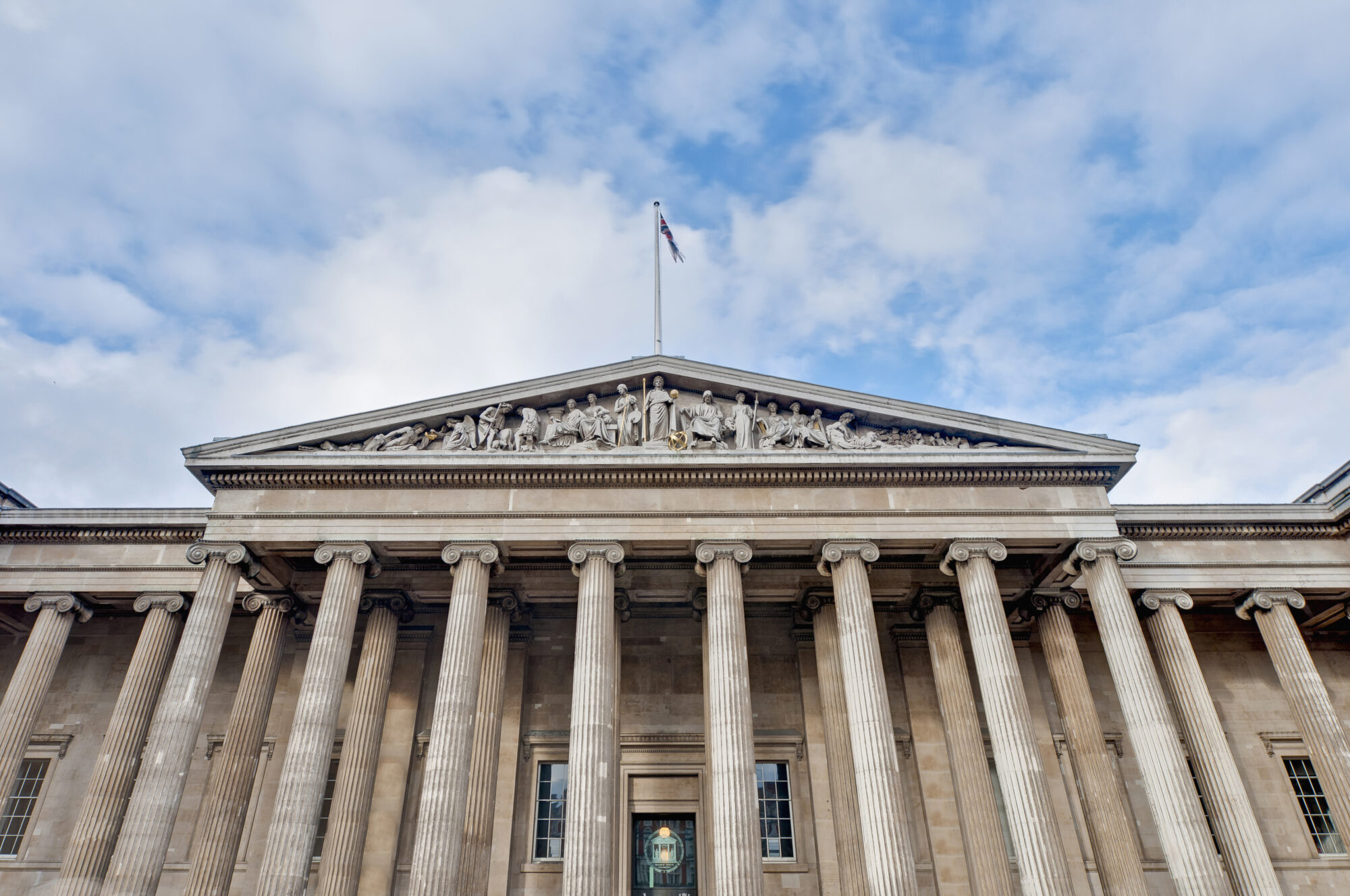Founded in 1753, the British Museum first welcomed visitors in 1759. Entranced by people from all over the globe, it was the pioneering national museum that included every area of human knowledge. The museum has always been a symbol of the Enlightenment ideas and values, which include tolerance, scientific inquiry, open discourse, critical evaluation of all assumptions, and the promotion of scientific knowledge. Sound research, an insatiable curiosity for the world, a profound belief in objects as reliable witnesses and documents of human history, and the desire to expand and share knowledge are the driving forces behind the museum.
Table of Contents
ToggleExplore the historical background of the British Museum
An Act of Parliament established the first free, national public museum in 1753. In 1759, it welcomed “all studious and curious persons.” In the beginning, ticket applications were the only way for people to see the museum’s treasures during the museum’s restricted opening hours. Because of this, the museum could only accommodate well-connected visitors who could arrange for private tours of the artefacts with the help of the curators and trustees.
Regulations began to relax in the 1830s, allowing for longer operating hours. More than 6 million people from all around the world visit the museum annually. It all began when the museum became truly open and freely accessible to everyone. Additionally, the museum’s robust lending program and travelling exhibitions allow millions of people to see its treasures at locations all around the globe.
The diverse collections of the museum have expanded over the last two centuries to include around eight million artefacts, spanning a period of two million years in human history. Museum holdings include artefacts found during excavations, sold, or bequeathed by various individuals; others are from areas that were once under British colonial control.
The British Museum boasts grand architecture
The Greek Revival-styled structure in Bloomsbury, London, serves as the hub of the British academic community. Its four massive wings, triangular pediment, 43 columns inspired by Greek temples, and gigantic stairs make it seem out of place in the middle of London.
Architect Sir Robert Smirke planned the opulence of the building in 1823 to showcase the wonderful objects housed within. This had become more popular since western Europeans “rediscovered” ancient Greece in the 1750s and was based on classical Greek architecture, which it imitated. They used state-of-the-art technology to finish the structure in 1852: a cast-iron frame filled with London stock brick, concrete floors, and Portland stone for the front layer. Awarded the prestigious Gold Medal by the Royal Institute of British Architects in 1853, the quadrangle structure stands tall.
What should I see in the British Museum?
Numerous individuals, both big and small, have made substantial contributions to the collections. Some have planned artwork donations or sales to the British Museum. Others have arranged archaeological digs or given artefacts found on their travels. The British Museum’s collection wouldn’t exist without these people.
1. The Parthenon Sculptures
Located atop the Athenian Acropolis, an ancient fortress perched on a rocky hill inside the city, these Parthenon sculptures date back around 2,500 years. Athens’ patron goddess, Athena Parthénos, officiated the temple’s dedication ceremony. ‘Maiden, girl’ or ‘virgin, unmarried lady’ are the definitions of the Greek term parthénos.
Rich sculptures created by the artist Pheidias adorned the temple. The triangular pediment and carved panels adorn the temple’s roof, depicting scenes from Greek mythology. The frieze, meanwhile, shows the Athenians participating in a religious procession honouring the goddess’s birthday. Sadly, the enormous golden and ivory statue of Athena that formerly graced the temple’s interior has long since vanished.
2. Crouching Venus
Aphrodite, or Venus as she was known to the Romans, was originally a Greek goddess, and this sculpture dates back to the second century AD, when Rome adopted it. Greeks likely created the original, now-lost marble or bronze work sometime between 200 and 100 BC. Along with Aphrodite, the Greek goddess of love, you could see Eros, the god of love, or even cupids and doves. Looking at this sculpture, one feels like they are watching the goddess bathe, which surprises her.
3. Rosetta Stone
A decree, or official command, is carved into the stone, which was previously part of a larger slab. The edict’s three hieroglyphic scripts ultimately enabled experts to read it. The decree itself is not particularly unique. From its long history to its ideas about the afterlife, this paved the way for ancient Egypt.
4. The Tomb of the Unknown Craftsman
An artist and trustee of the British Museum, Grayson Perry, has won the Turner Prize and made this piece of temporary exhibition art. The artwork, which depicts an iron ship gliding into the afterlife, is a tribute to the many talented people, both male and female, who have contributed to the museum’s collection. The piece will be on exhibit in Room 17. This is next to the Nereid Monument in western Turkey, which was constructed in 390 BC. Since then, the builders and carvers of the Nereid Monument, a mausoleum for a local monarch, have disappeared.
5. Bust of Ramesses the Great
The massive bust depicts Ramesses II, king of Egypt from 1279 to 1213 BC. The figure, which is an astounding 7.5 tonnes, was once part of a much bigger sculpture that resided in the Ramesseum, a temple that the pharaoh constructed in Thebes (modern-day Luxor). The adornment paid homage to his military prowess and his intimate relationship with the deity of creation, Amun-Ra. News coverage of the bust’s transfer to the UK reportedly inspired Shelley’s favourite sonnet, Ozymandias.
6. Sophilos Vase
This ancient Greek bowl and stand, beautifully crafted, held wine and water for a banquet. Around 580 BC, Athens made them. The artist who created the vessel gives it the moniker “Sophilos made me”. Greek mythological scenes cover the vase, including the marriage of Achilles’ parents, Peleus and Thetis. In the Iliad, Homer recounts the exploits of the legendary hero, who was among the most valiant soldiers in the Trojan War.
7. The previously Bee’s Nose
It is likely that this lifelike brass sculpture dates back around 600 years. It is often believed to portray an Ooni, a revered monarch from the Ife Kingdom in West Africa. Ife, in modern-day Nigeria, is considered the spiritual and cultural abode of the Yoruba people, and the traditional monarch of Ife continues to use the title of Ooni.
This work, along with other human-figure pieces by Ife artists, exhibits a strikingly realistic style. Western academics mistakenly thought the Ife heads were either European or inspired by classical sculpture; this reflected long-standing prejudices against African art and culture as well as the supposed superiority of Western art.
8. Aztec serpent
In what is now Mexico, artists created this remarkable sculpture of a double-headed snake in the 15th or 16th century, using over 2,000 pieces of turquoise set on a hardwood base. Worn or carried during religious events, it probably had ceremonial significance.
The Aztecs held snakes in high regard because they represented Quetzalcoatl, the serpent deity with feathers. From the Pacific Ocean to the Gulf of Mexico, the vast expanse of the Aztec Empire was home to many subject territories. The Aztec Emperor often demanded payment in the form of presents from his subjects. The value of contributions made of turquoise was very great.
9. The Tree of Life
In 2004, four artists—Cristóvão (Kester) Canhavato, Hilario Nhatugeuja, Adelino Mate, and Fiel dos Santos—created this impactful artwork in Mozambique using disused guns for the British Museum.
Conflict broke out in Mozambique in 1977, after the country’s 1974 declaration of independence from Portuguese colonial authority. During this time, the nation received millions of firearms. When the conflict in Mozambique ended in 1992, Bishop Dom Dinis Sengulane came up with the idea of “Transforming Arms into Tools” to encourage the Mozambican people to trade their guns for other commodities. To create the sculpture, the plan involved gathering various weapons, including disassembled AK-47 rifles, handguns, and rocket-propelled grenade launchers.
10. The Piranesi Vase
Made from a hodgepodge of ancient and contemporary elements, this 2.7-meter-tall vase dates back to the 1700s. Italian engraver, architect, and antiquarian Giovanni Battista Piranesi (1729–1778) owned it. Piranesi is famous for his depictions of Rome’s architecture, both actual and imaginary, in his works spanning centuries.
Using historical artefacts purportedly discovered in the Pantanello, a location on the grounds of the Roman Emperor Hadrian’s home at Tivoli, close to Rome, Piranasi created the vase and other pieces. He repaired them and used them in elaborately ornamented pastries.
11. Akan Drum
The British Museum has an ancient African-American artefact, a wooden drum. Virginia, a former British colony and current U.S. state, amassed it about 1730. Contrary to popular belief, it did not originate in North America but rather in West Africa more than three centuries ago. The ‘Akan Drum’ got its name because an Akan artisan probably manufactured it in what is now Ghana and Côte d’Ivoire.
According to popular belief, the Akan Drum made its way to Virginia on a slave ship as part of the transatlantic slave trade, which sent millions of Africans to the Americas against their will from the 17th to the 19th century. Slaves “exercised” themselves on these long treks, dancing to the beat of drums designed to shield them from the harsh conditions of plantation work. The appropriation and prohibition of drums were part of the coercive eradication of African culture in North America.
12. Haida House Pole
This pole was erected in the front of an ancestral home in Kayang, British Columbia, Canada, in the 1850s. The pole features depictions of crests, symbols of ancestry that serve to identify individuals and grant them ownership of stories and land. As a result of diseases brought to the area by Europeans in the 1800s, the inhabitants of Kayang left their home and community. A doctor purchased the pole from the House Chief before selling it to the British Museum.




